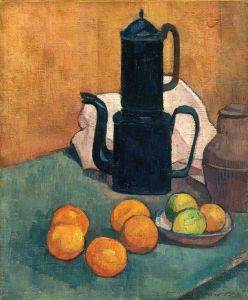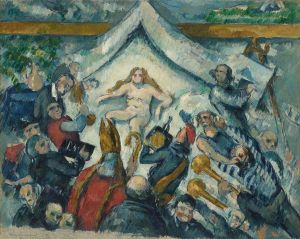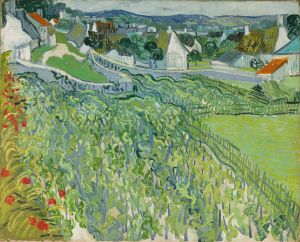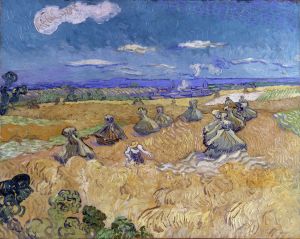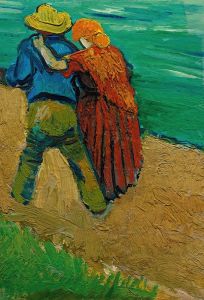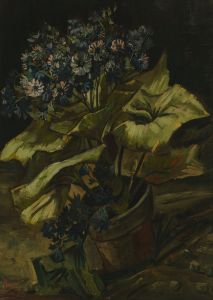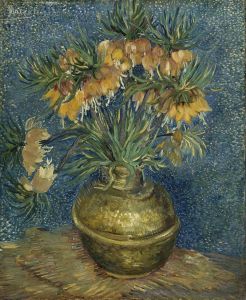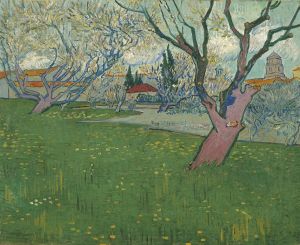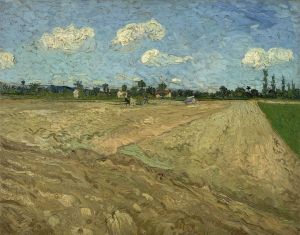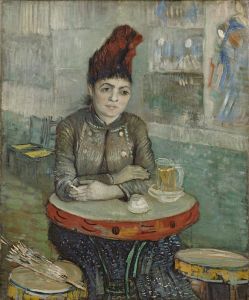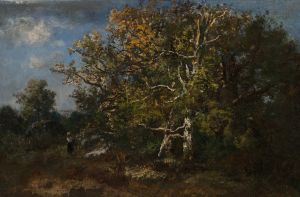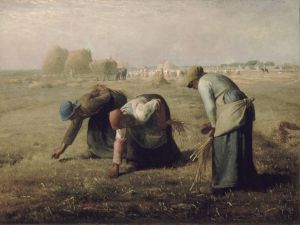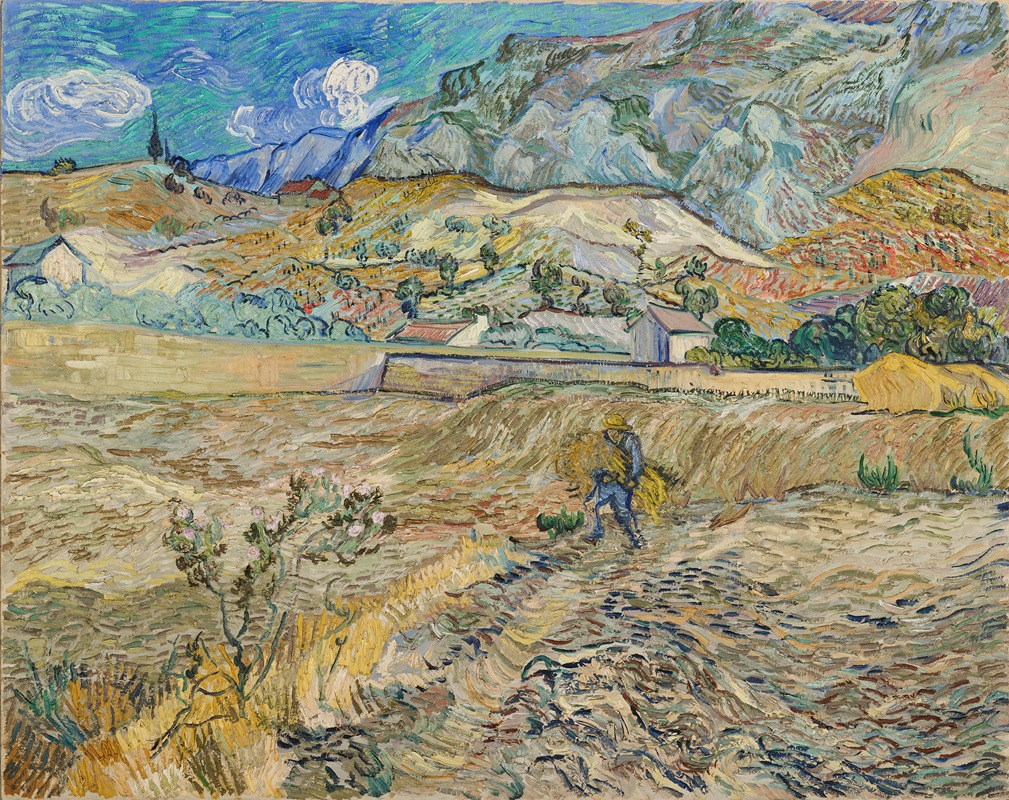
Landscape at Saint-Rémy
A hand-painted replica of Vincent van Gogh’s masterpiece Landscape at Saint-Rémy, meticulously crafted by professional artists to capture the true essence of the original. Each piece is created with museum-quality canvas and rare mineral pigments, carefully painted by experienced artists with delicate brushstrokes and rich, layered colors to perfectly recreate the texture of the original artwork. Unlike machine-printed reproductions, this hand-painted version brings the painting to life, infused with the artist’s emotions and skill in every stroke. Whether for personal collection or home decoration, it instantly elevates the artistic atmosphere of any space.
"Landscape at Saint-Rémy" is a painting by the renowned Dutch artist Vincent van Gogh, created in 1889 during his stay at the asylum of Saint-Paul-de-Mausole in Saint-Rémy-de-Provence, France. This period was one of the most productive in Van Gogh's career, despite the personal struggles he faced with his mental health. The painting is an exemplary piece that showcases Van Gogh's distinctive style and his ability to convey emotion through vibrant color and dynamic brushwork.
Vincent van Gogh admitted himself to the asylum in May 1889 after experiencing a series of mental health crises. During his time there, he was allowed to work on his art, which proved to be therapeutic for him. The landscapes surrounding the asylum provided Van Gogh with ample inspiration, and he produced numerous works that captured the essence of the Provençal countryside.
"Landscape at Saint-Rémy" is characterized by its swirling, expressive brushstrokes and vivid color palette, elements that are hallmarks of Van Gogh's mature style. The painting depicts the rolling hills and fields typical of the region, with a dramatic sky that seems to pulse with energy. Van Gogh's use of color is particularly striking; he employs a range of blues, greens, and yellows to create a sense of movement and vitality. The composition is both dynamic and balanced, drawing the viewer's eye across the canvas and inviting them to explore the landscape.
The painting reflects Van Gogh's deep connection to nature and his ability to translate his emotional state into his work. The expressive quality of the brushwork and the intensity of the colors suggest a sense of turbulence, perhaps mirroring the artist's own inner turmoil. Yet, there is also a sense of harmony and beauty in the depiction of the natural world, indicating Van Gogh's appreciation for the landscapes that surrounded him during his time in Saint-Rémy.
Van Gogh's work from this period, including "Landscape at Saint-Rémy," has been highly influential in the development of modern art. His innovative use of color and form paved the way for future movements such as Fauvism and Expressionism. Today, Van Gogh is celebrated as one of the most important figures in Western art history, and his paintings continue to captivate audiences worldwide.
"Landscape at Saint-Rémy" is housed in a private collection, which means it is not as accessible to the public as some of Van Gogh's other works. However, it remains an important piece within his oeuvre, offering insight into the artist's creative process and his ability to find beauty and inspiration even in challenging circumstances.
In summary, "Landscape at Saint-Rémy" is a testament to Vincent van Gogh's artistic genius and his enduring legacy. The painting not only captures the physical beauty of the Provençal landscape but also serves as a window into the artist's soul, reflecting both his struggles and his profound connection to the world around him.





